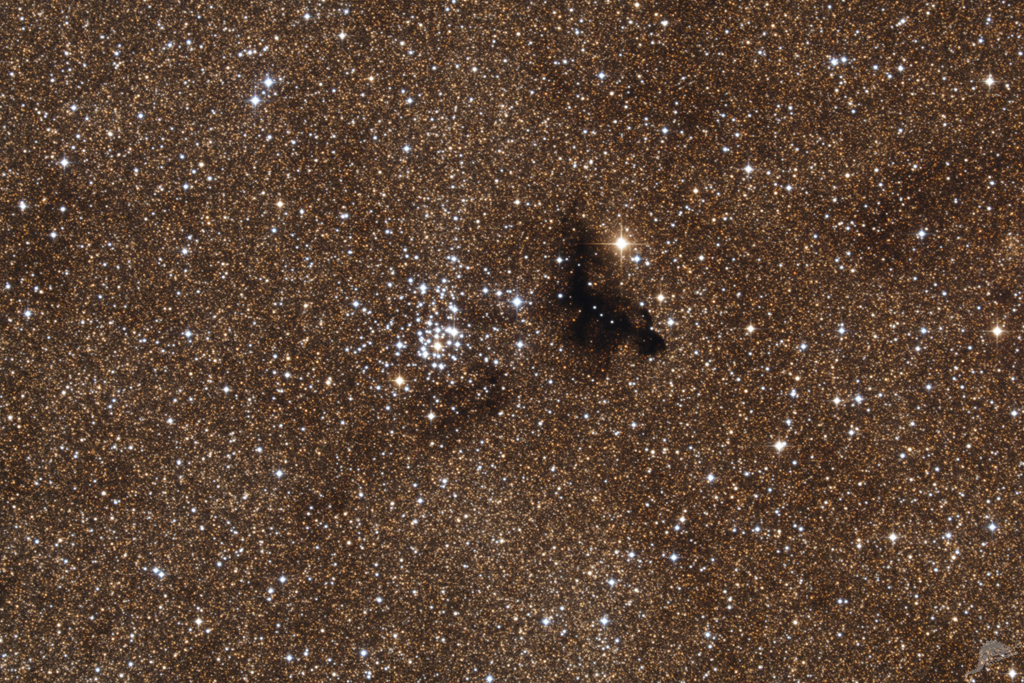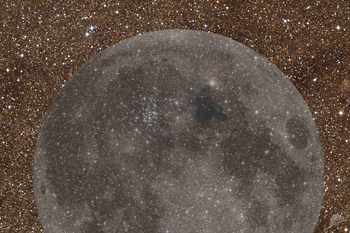 |
CHAMÄLEON + ONJALA OBSERVATORY DeepSky | SITEMAP HOME CHAMÄLEON |
|
 |
|||
| « back to overview Star Clusters | Load higher resolution 1800 x 1200 Pixel 3800 x 2600 Pixel | Object description |

Barnard 86 lies in front of the star field when viewed from Earth. The small grains of dust that make up the cold and dense dark cloud absorb the light of the stars behind it and it appears opaque. Presumably we can see here the remains of the molecular cloud which collapsed to form the nearby star cluster NGC 6520. The few stars that seem to stand in the middle of Barnard 86 are in reality in the foreground, between us and the dark cloud.
As a young open cluster of stars, NGC 6520 contains many hot stars. Its blue-white glow reveals its low age. Usually open star clusters consist of several thousand stars that have formed at the same time and are therefore of the same age. They usually stay together for only a comparatively short time - a few hundred million years - before slowly drifting apart. The age of the stars in NGC 6520 is estimated to be "only" 150 million years. Together with Barnard 86, the star cluster stands at a distance of almost 2000 light years from our solar system. NGC 6520 was discovered on 24 May 1784 by Friedrich Wilhelm Herschel.
 |
 |
 |
 |
 |
 |
 |
| Sun | Moon | Solar System | DeepSky | Widefield | Miscellaneous | Spec. Projects |
